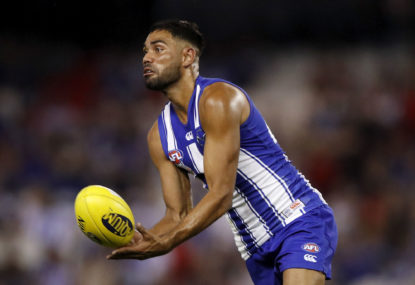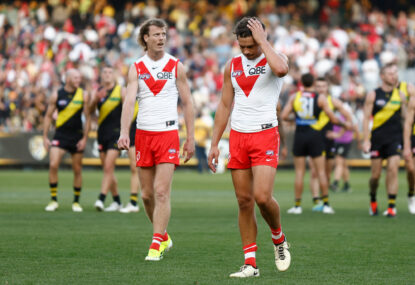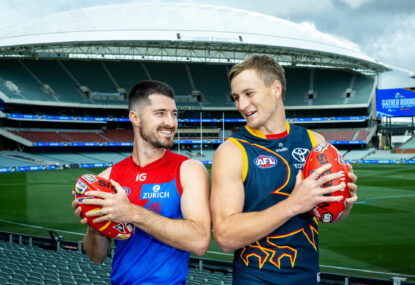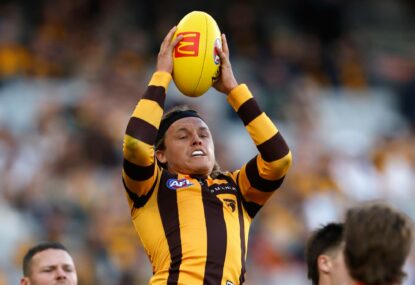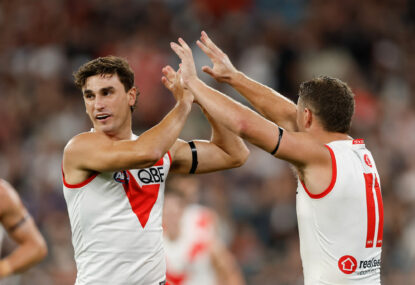Disregard the Sydney Swans at your peril.
It’s ladder prediction time and one club that has been overlooked and forgotten is one of the strongest and most consistent teams in the modern era.
The Swans backed up two 14-win seasons in 2017 and 2018 with a 14-loss season in 2019, finishing 15th and putting a dent in the club’s reputation as regular locks for finals.
Yet Sydney, with only eight wins, did not have a bad season.
In fact, the Swans took a step forward in 2019 that has them in good stead for the upcoming season – and, indeed, decade.
According to Champion Data, Sydney were the most competitive team that lost 14 or more games in a season, with an average losing margin of just 19.5 points.
They finished with 97.7 per cent an astonishing figure for a bottom-four club, and were only beaten by more than 40 points on two occasions – Richmond lost by more than 40 points on four occasions in 2019.
Where the Sydneysiders took clear strides forward was perhaps the team’s achilles heel of yesteryears, in that they gave opportunities and responsibilities to younger players, which has fast-tracked some elite talent.
With holes in key areas left by Daniel Hannebery, Heath Grundy and the injured Lance Franklin, coach John Longmire was able to maintain the status quo and as the season wore on, develop the same team cohesion and culture that has made Sydney a tough opponent for over a decade.
Nick Blakey (20 games), Jordan Dawson (20), Colin O’Riordan (12) and James Rowbottom (12) played far more than what would have been expected of them heading into the season, while the likes of George Hewett and Aliir Aliir became crucial members of the team.
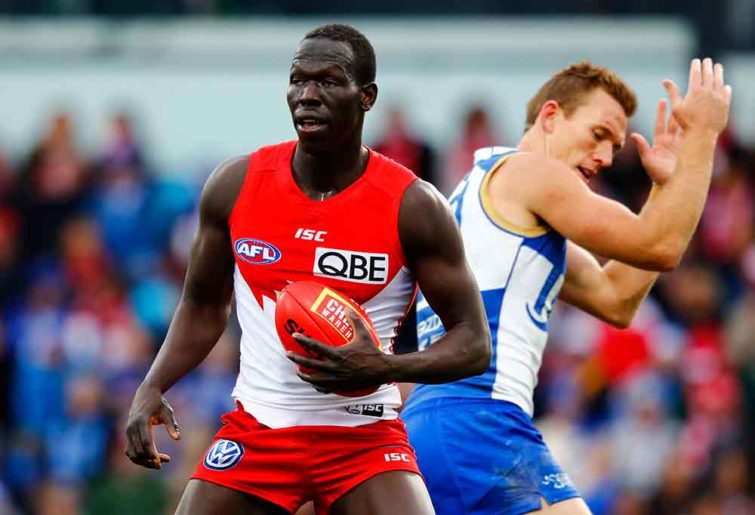
AAP Image/Rob Blakers
The opportunities for these players in their preferred positions were limited, with only O’Riordan playing in a settled role, however Longmire’s tutelage suggests his players will become more versatile, taking a leaf out of the Richmond and Hawthorn playbooks.
Easily the club’s biggest absence by name – Franklin only playing ten games, all of which were limited – allowed the forward line to become unpredictable and at times, more dangerous.
Sam Reid played every game and has shown to be a more-than-capable second forward, while Blakey’s height and genuine footy smarts allowed him to be dangerous.
While scoring was tough at times, the Swans came up with a variety of avenues to suggest the addition of Franklin and perhaps a re-energised, attack-focused Lewis Taylor could place them in the top half of the competition.
Defensively, the Swans were super solid and best-and-fairest winner Dane Rampe established himself as perhaps the best backman in the competition.
At 187cm, Rampe’s ability to be the most important key defender when needed, as well as a key rebounder when peeling off smaller forwards, almost guarantees that the club has stability in defence.
The bigger-bodied defenders struggled at times, with Lewis Melican rating below average in one-on-one contests, while Aliir’s defensive play is at its best when intercepting, making the recruitment of Kaiden Brand vital.
Needing a big-bodied defender who excels head-to-head with big forwards, Brand has the opportunity to become a long-term option, while also using his history with one of the best coaches in the history of the game to assist players of the future like Jack Maibaum.
Sydney’s multi-faceted defensive strength of aerial nullification with a good ability to control the ball while on the ground doesn’t change, particularly with the one-on-one improvement of Jake Lloyd towards the end of the season.
A willingness to use the corridor, ranked second in the competition in 2019, means Sydney’s improvement in the contested midfield area needs to only be marginal to create a whole-team threat.
Their contested possession struggles reached an all-time low last season, with the unwillingness to blood youth and an over-reliance on Josh Kennedy in years gone by catching up. Yet while Kennedy maintains he has held onto his status as the main contested bull, the club’s modified style of play and intelligent recruitment has allowed for contested numbers to not define their image.
An improvement from below average to average is enough and with George Hewett likely to be released from tagging duties, James Rowbottom’s predicted breakout season and some more Isaac Heeney rotated into the guts in a set pattern with Luke Parker, the Swans finally have that depth to break even.

Isaac Heeney (AAP Image/Julian Smith)
Given the ruck situation is less than ideal – Sam Naismith and Callum Sinclair are average at best while perhaps the best ruckman at the club, Michael Knoll, hasn’t been sighted – it’s important to temper the expectations on the inside brigade.
The seemingly direct style of ball movement will continue, and it will be an exciting Sydney team that becomes the flavour of the decade.
The preference to gain territory through the centre, particularly with the long kicking of Jordan Dawson and Rampe, means the club’s outside midfielders play an inverted-wing role, and the space created on the flanks means these areas are used purely for using angles to set up attacking kicks, rather than the traditional wing-play we see from the likes of Bradley Hill and Ed Langdon.
Oliver Florent spent more time centrally towards the end of the season and can expect to play a similar role, while Mills appears to have finally graduated from the defensive 50 thanks to Dawson and Will Gould, meaning his running capacity can be utilised through the midfield.
If Brand is a typical Sydney selection, then Sam Gray is simply the next chapter in the ‘how to pluck a new Swan’ handbook.
Gray fits in perfectly with the plans to get the ball up the middle and roll forward in waves, and he can be the perfect type of player for likely debutant Zac Foot to model his game on.
Add in talented youngsters who are sure to play roles this season in Justin McInerney and Ryley Stoddart, as well as last year’s pick five, Dylan Stephens, and you’ve got a versatile and exciting rebounding/midfield group with the creativity and speed to cause havoc.
With one of the best coaches in the league surrounded by excellent assistants, the club has redefined its own identity and rebuilt within a season.
Assessing their squad and identifying strengths and weaknesses allows for the drafting and recruitment of little gems that many will happily overlook, resulting in a squad that won’t be slept on for much longer.
Sydney should start 2020 off positively, perhaps winning four of their first five games, but as one of the youngest lists in the competition, this is a team to watch for many years to come.
While the flashy, big clubs have enjoyed the spotlight over the last few years, the Swans are building another dynastical chapter.
If you want a challenger for Richmond’s dominance over the next few years, then prepare to cheer, cheer for the red and the white.































































































